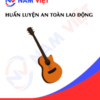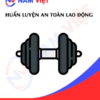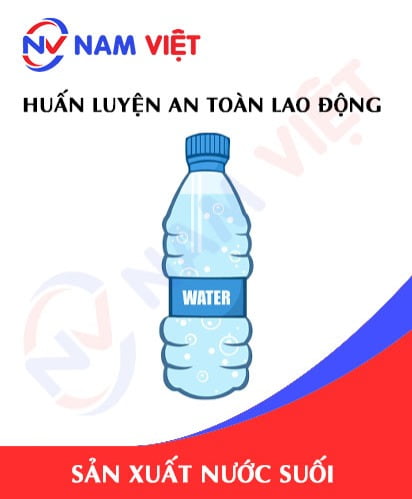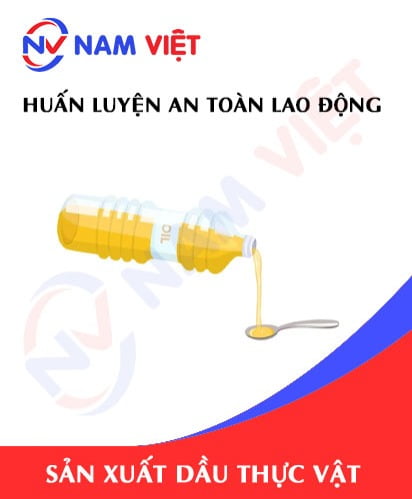Occupational Safety Training for Piano Manufacturing
99,000 ₫
Note: The above price is calculated per person and may vary depending on the number of trainees participating in the course and market fluctuations. For more accurate pricing information, please refer to the price list or contact our consultants directly.
Occupational safety is an important issue in piano manufacturing factories and needs to be addressed promptly to ensure the health and safety of workers, as well as to enhance the reputation of businesses. The Occupational Safety Training course is an effective solution to raise awareness about accident prevention for workers involved in piano production.
Table of Contents
Toggle1. Overview of the Piano
a. What is a piano?
The piano is a type of keyboard instrument invented in the early 18th century by Bartolomeo Cristofori. It consists of a keyboard with white and black keys, each corresponding to a specific musical note. When a key is pressed, a small hammer inside strikes the string, producing sound.
Pianos are generally divided into two main types: acoustic pianos and digital pianos. Acoustic pianos use a mechanical system to create sound, while digital pianos use electronic technology to emulate the sound of acoustic pianos. Acoustic pianos are commonly used in concerts and professional performances, while digital pianos are more popular for learning and home practice.
The piano is not only a staple instrument in classical music but is also widely used in various genres such as jazz, pop, and rock. With its rich and expressive tonal range, the piano has become an essential tool for composition and performance worldwide.

b. Types of machinery used in piano manufacturing
The process of manufacturing a piano requires a combination of various machines and technologies to ensure precision and high quality. Below are some key machines used in piano production:
- Wood cutting and shaping machines: Since pianos are mainly made of wood, cutting and shaping machines are indispensable. These machines cut, grind, and shape wood components to the required size and form, including the soundboard, frame, and other parts.
- Frame bending machines: To create the curved shape of the piano, especially in acoustic pianos, manufacturers use frame bending machines. These machines bend thick wooden beams into curves without breaking or damaging the wood.
- Key drilling and installation machines: Piano keys must be precisely installed on the keybed. Key drilling and installation machines create accurate holes and secure the keys in place, ensuring smooth and precise key movement.
- Stringing and tensioning machines: A piano has hundreds of strings, each requiring precise tension and tuning. Automatic stringing and tensioning machines ensure each string is tightened to the exact tension and tuned to the required frequency.
- Grinding and polishing machines: Once the piano parts are assembled, the instrument’s surface needs to be polished for a smooth, glossy finish. Grinding and polishing machines refine the wood and metal surfaces of the piano.
- Sound testing and final finishing machines: Finally, sound testing machines are used to ensure the piano produces accurate and high-quality tones. The piano is then completed with final touches such as lid installation, legs, and other accessories.

c. Famous piano manufacturing brands
- Steinway & Sons: Founded in 1853 in New York, Steinway & Sons is one of the most prestigious piano brands in the world. Steinway pianos are known for their exceptional sound quality, durability, and elegant design. Many renowned pianists choose Steinway pianos for their performances.
- Yamaha: A Japanese brand, Yamaha has become one of the leading piano manufacturers globally. Yamaha pianos are praised for their durability, sound quality, and modern features. They offer a wide range of acoustic and digital models to suit various needs.
- Kawai: Also from Japan, Kawai is known for high-quality pianos with advanced technology. Kawai pianos are appreciated for their warm sound, smooth keyboard action, and outstanding durability. The company produces both acoustic and digital pianos for different player levels.
- Bechstein: Established in 1853 in Germany, Bechstein is a long-standing brand specializing in high-end pianos. Bechstein pianos are renowned for their refined sound, luxurious design, and meticulous craftsmanship, making them a top choice for professional pianists.
- Bösendorfer: An Austrian brand, Bösendorfer is famous for its premium pianos, especially grand piano models. Bösendorfer pianos are highly valued for their rich, deep tones and world-class design. Many top pianists worldwide favor this brand.
- Fazioli: Founded in 1981 in Italy, Fazioli is relatively new compared to other brands but has quickly gained a reputation as one of the leading luxury piano manufacturers. Fazioli pianos are known for their exquisite sound quality, modern design, and use of premium materials.

d. Specific jobs in a piano manufacturing plant
Group 1
- Executive director, deputy executive director, and department heads in the piano manufacturing plant.
Group 2
- Safety officers: manage plant safety, design safety procedures, monitor, and ensure workers comply with safe work practices.
Group 3
- Cutting and joining wood: Thin wood sheets are cut and joined together to form the soundboard.
- Shaping: The soundboard is curved and fixed into the desired shape.
- Bending and assembling the frame: Wood is bent and assembled to create the piano frame, which must be strong enough to withstand string tension.
- Metal frame processing: The cast iron plate is molded and precisely machined to ensure durability and tonal accuracy.
- Key manufacturing and assembly: Keys are manufactured and assembled with precision, ensuring smooth operation for each key.
- Hammer assembly: Hammers are installed in the action mechanism and adjusted to strike the strings at the correct position and force.
- Stringing: Strings are installed on the frame and tightened to the correct tension.
- Tuning: Each string is tuned to the correct pitch frequency.
- Grinding and polishing: The piano’s surface is ground and polished to achieve a high-quality finish.
- Sound testing: The piano is tested to ensure it meets sound quality requirements.
- Final adjustments: Final fine-tuning is performed to ensure the piano works perfectly and produces the best sound possible.
Group 4
- Office, service, sales, and marketing roles.
- Production management, quality control, human resources management, materials management, financial and accounting management.
- Research and development of new products, packaging design.
2. Overview of the Occupational Safety Training Course for Piano Production
In this article, we focus on issues related to Group 3, because Group 3 consists of those who directly participate in the production process and face the highest occupational safety risks. See other groups here.
a. What is Group 3 Occupational Safety Training?
- Group 3 Occupational Safety Training consists of lessons that equip workers with awareness on how to prevent workplace accidents.
- The training course helps workers identify and avoid hazards, reducing the risk of workplace accidents during work.
REGISTER FOR OCCUPATIONAL SAFETY TRAINING SERVICE
b. Training Duration
Initial safety training duration
- The total training duration is at least 24 hours, including examination time.
- 8 hours of theoretical lessons on the system of occupational safety and hygiene policies and laws.
- 8 hours of theoretical lessons on basic occupational safety and hygiene knowledge.
- 4 hours of theoretical lessons on specialized training content.
- 2 hours of practical lessons on specialized training content.
- 2 hours for the final theoretical examination.
The training center will allocate the time into multiple sessions depending on the company’s scheduling for employees. Typically, there are 6 training sessions over 3 consecutive days if the production schedule allows.
Periodic safety training duration
- Before the occupational safety card expires, workers who wish to renew it must attend a periodic occupational safety training course, with a periodic training duration equal to at least 50% of the initial training duration.
Explanation: The total periodic training duration is at least 12 hours, including examination time. After completing the periodic training and passing the test, workers will have their occupational safety card renewed.
c. Training Content
| No. | TRAINING CONTENT | TRAINING DURATION (HOURS) | |||
| Total | Including | ||||
| Theory | Practice | Test | |||
| I | System of occupational safety and hygiene policies and laws | 8 | 8 | 0 | 0 |
| 1 | Overview of the legal framework on occupational safety and hygiene. | 6 | 6 | ||
| 2 | System of occupational safety and hygiene standards and regulations. | 1 | 1 | ||
| 3 | Specific regulations by state management agencies on occupational safety and hygiene when constructing, expanding, or renovating facilities to produce, use, store, preserve, and inspect machinery, equipment, materials, and substances subject to strict safety and hygiene requirements. | 1 | 1 | ||
| II | Basic knowledge of occupational safety and hygiene | 8 | 8 | 0 | 0 |
| 1 | Basic knowledge of hazardous and harmful factors in the workplace. | 4 | 4 | ||
| 2 | Methods to improve working conditions. | 1 | 1 | ||
| 3 | Safety culture in production and business. | 1 | 1 | ||
| 4 | Rights and obligations of employers and employees; occupational safety and hygiene policies and regimes for workers; functions and duties of the safety and hygiene network. | 1 | 1 | ||
| 5 | Occupational safety and hygiene rules, signs, and instructions; use of safety devices and personal protective equipment; first aid skills for occupational accidents; prevention of occupational diseases. | 1 | 1 | ||
| III | Specialized training content | 6 | 4 | 2 | 0 |
| Comprehensive knowledge of machinery, equipment, and substances that generate hazardous factors; analysis, assessment, and management of occupational safety and hygiene risks; safe working procedures with machinery, equipment, and substances subject to strict safety and hygiene requirements. | 6 | 4 | 2 | ||
| IV | Final examination of occupational safety training content | 2 | 2 | 0 | 0 |
| Total | 24 | 22 | 2 | ||
See more training content for all 6 groups.
d. Occupational Safety Card
After completing the occupational safety training and passing the test, the worker will be issued an occupational safety card (commonly referred to as a Group 3 occupational safety certificate).
The Group 3 safety card clearly shows information such as: full name, date of birth, job title, and specific working environment, as well as the training duration, red seal, and signature confirming course completion.
According to the safety card issuance regulations specified in Clause 2, Article 24 of Decree 44/2016/NĐ-CP, there are two cases:
- If the employer and the employee have a labor contract, the employer must sign, stamp, and seal the safety card for Group 3 trainees after completing the training from a licensed occupational safety training unit and passing the test.
- If the worker is a freelancer, seasonal worker, or does not have a labor contract, the training unit must sign, stamp, and seal the safety card after the worker completes the training and passes the test.

3. Identifying Hazards Affecting Workers in Piano Manufacturing
- Mechanical injury risks:
- Cuts and impacts: During the manufacturing and assembly process, there is a risk of workers being cut, pierced, or struck by sharp tools, machinery, or wooden and metal parts of the piano.
- Chemical hazards:
- Use of chemicals: Chemicals such as adhesives, coatings, solvents, and cleaning agents can be harmful if not used properly. Appropriate personal protective measures and safe working procedures are required.
- Noise hazards:
- High noise levels: The machining and tuning process of pianos can produce high noise levels, affecting workers’ hearing. Ear protection measures are necessary to minimize noise exposure.
- Dust and metal fume hazards:
- Generation of dust and metal fumes: Wood and metal processing can produce wood dust and metal fumes, which are harmful to workers’ respiratory health. Suitable protective equipment such as respirators should be used to safeguard health.
- Ergonomic and musculoskeletal injury risks:
- Working in uncomfortable positions: Piano assembly and tuning often require prolonged and awkward postures, which can lead to fatigue and musculoskeletal injuries such as back, neck, and shoulder pain.
- Temperature and workplace condition hazards:
- Temperature and humidity: Piano manufacturing plants may have varying temperature and humidity levels, potentially affecting workers’ health. Environmental controls such as air conditioning and temperature management should be in place.

4. Safety Measures in Piano Manufacturing
- Training and instruction: Provide occupational safety training for all new employees and periodic updates for current staff. Ensure they understand and follow safe working procedures.
- Use of Personal Protective Equipment (PPE):
- Ensure the use of appropriate PPE such as helmets, safety glasses, respirators, gloves, ear protection, and safety shoes depending on the work stage.
- Equipment inspection and maintenance:
- Regularly inspect and maintain machinery and equipment to ensure safe and efficient operation. Do not use damaged or non-compliant equipment.
- Chemical management:
- Store and use chemicals according to safety regulations. Ensure containers are sealed and properly labeled with safety information.
- Noise reduction:
- Provide ear protection devices and apply technical measures to minimize noise from equipment and production processes.
- Dust and metal fume control:
- Use effective ventilation and dust extraction systems to control wood dust and metal fumes. Ensure clean and safe air for workers’ health.
- Regularly conduct occupational environment monitoring in factories to collect and analyze harmful factors, then adjust to reduce hazards and prevent occupational diseases.
- Work posture management:
- Ensure workstations are designed to minimize physical strain and prevent injuries from poor posture.
- Safe waste handling:
- Instruct and require employees to handle waste according to safety regulations and methods, especially hazardous waste such as chemicals and wood dust.
- Regular adjustments and maintenance:
- Periodically inspect and maintain equipment and machinery to ensure they always operate safely and efficiently.
- Feedback and continuous improvement:
- Establish a system for feedback and continuous improvement to detect and address safety issues promptly and prevent recurrence.
5. Benefits of Occupational Safety Training in Piano Manufacturing
An Toàn Nam Việt offers your business significant benefits after completing occupational safety training in accordance with Decree 44/2016/NĐ–CP on occupational safety and hygiene for companies, factories, and enterprises.
- Workers can identify potential occupational accident hazards and take preventive measures to avoid incidents.
- Your business can establish risk prevention measures in production, operation, and maintenance processes.
- Minimize costs associated with workplace safety risks.
- Prevent production disruptions, thereby increasing productivity and product quality.
- Ensure compliance with occupational safety laws and avoid legal risks.
- Enhance your company’s reputation and professionalism, thereby elevating its brand value.
Nam Việt’s training courses are the solution to protect individuals from external hazards that could cause injuries or, in severe cases, fatalities.
REGISTER FOR OCCUPATIONAL SAFETY TRAINING
6. Customer feedback after completing the occupational safety training for piano production
An Toàn Nam Việt has many years of experience in its mission to accompany numerous enterprises across Vietnam in general and the southern provinces in particular. That responsibility is extremely valuable to Nam Việt, which is why Nam Việt’s Occupational Safety Training has been increasingly prioritized and professionalized. The motivation for An Toàn Nam Việt’s growth to its current scale comes from positive feedback and suggestions from businesses. Below are responses from partners we have served.
Bắc Nam E&C Investment & Construction Joint Stock Company
“The first time we used An Toàn Nam Việt’s service I was surprised by the enthusiastic 24/7 support from the consulting team. The class organization was very quick and convenient for our company — thank you very much for Nam Việt’s service!”
Hoa Đất Construction and Trading Joint Stock Company
“Nam Việt’s service helped us greatly in simplifying occupational safety and completing safety dossiers needed for our operations. The consulting team responded enthusiastically and promptly to our inquiries. Five stars for Nam Việt.”
See more customer interview sessions after using An Toàn Nam Việt’s services.
7. An Toàn Nam Việt’s Occupational Safety Training Capability
An Toàn Nam Việt is a reputable and high-quality occupational safety training center in Vietnam today. Our occupational safety training sessions are conducted continuously at manufacturing workshops, factories, or construction sites across the country (all 63 provinces and cities of Vietnam).
REGISTER FOR OCCUPATIONAL SAFETY TRAINING SERVICE
Occupational safety training license
- An Toàn Nam Việt has been inspected and granted a certificate of eligibility for occupational safety and hygiene training by the Department of Occupational Safety under the Ministry of Labor, Invalids and Social Affairs. This further strengthens our capability in providing occupational safety training.

Materials and lectures
- Before occupational safety training materials are used in the ATLĐ training courses, they are reviewed and vetted to ensure the lessons are accurate in content and effective in application.
- The teaching methods of our instructors are standardized according to An Toàn Nam Việt‘s teaching standards — methods that occupational safety and hygiene training experts have researched and consolidated to deliver the highest learning effectiveness for trainees.
Facilities
- Controlling classroom environmental factors that affect the training process increases teaching efficiency and trainees’ knowledge absorption.
- Our training support facilities always provide spacious classrooms that meet standards in terms of area, lighting, training equipment, etc.
8. A nationwide reputable and quality training center
At An Toàn Nam Việt, we always place professional dedication to occupational safety training as our top priority. For us, imparting the knowledge of self-protection to workers so they have safety tools for their livelihood is a contribution to nation-building.
To ensure effective training, we prepare carefully and meticulously down to the smallest details — from preparing tools, teaching aids, and equipment to curricula, materials, sound, and lighting.
Our occupational safety trainers are experts with many years of field experience. They even have research works identifying hazards across various industries and ways to prevent them.
Instructors’ lessons are distilled from practical experience and conveyed in the most vivid and easy-to-imagine manner to workers. These factors help workers feel comfortable during training and absorb the knowledge well. Of course, the content always adheres to Decree 44/2016/ND-CP.
As a result, trainees grasp many measures to prevent hazards and ways to protect themselves, and they can apply them appropriately in real work situations.
Our training center is proud to be a provider of professional, reputable occupational safety training services with the following advantages:
- Competitive training costs while maintaining ensured training quality.
- Flexible training schedules that fit the production situation of companies.
- Quick and legally compliant procedures for issuing occupational safety training certificates.
- Experienced trainers with many years in the profession.
- Classrooms whose environmental factors are controlled to increase teaching efficiency and trainees’ knowledge absorption.
- Lessons tailored to occupational safety work in enterprises.
- An Toàn Nam Việt works with dedication and professionalism to support customers accurately and promptly.

9. Further references: occupational safety training materials for piano production
- Occupational safety training materials set
- Occupational safety training test set
- Occupational safety materials for piano production
- Occupational safety training curriculum for piano production
- Multiple-choice test for occupational safety in piano production
No comments yet















Review Occupational Safety Training for Piano Manufacturing
There are no reviews yet.